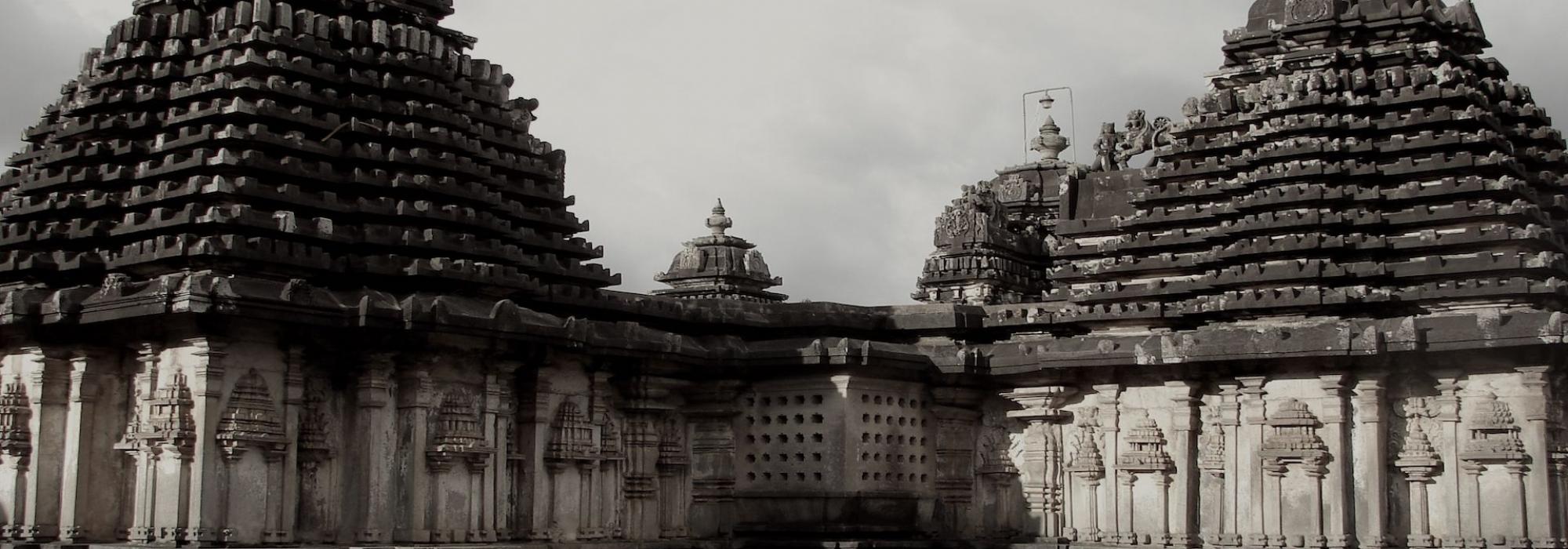After Krishnadevaraya’s death, Achyutaraya just managed to run the kingdom. He wasn’t particularly competent. And by the time of Ramaraya, the kingdom had completely declined. In this context, we must recall the Mahābhārata’s Daṇḍanīti (Principles of Governance). Chanakya and his predecessors who were experts in arthaśāstra (a generic term referring to ‘science of polity and economics’) have given various schemes, strategies, and suggestions for an emperor to skilfully manage the potential troubles caused by family members (brothers, cousins, women of the harem, and children). It is because several emperors of the past did not understand and implement this wisdom that our country was witness to historic catastrophes.
Śrīkṛṣṇa was never afflicted by any sort of attachment or illusion. In the great fight of the Yādavas, he decided that he would let his own sons die. Not just that, he actively participated in the destruction of his own people! What we need today is Krishna’s fortitude, his thought process, and the sort of uncompromising strength he displayed while they faced Karṇa-Duryodhana in the Great War, while he got Arjuna to kill Bhīṣma, and so on. We see the same thing in the Cāṇakyanīti as well. Vidyāraṇya had this awareness; in the Sangama siblings we find such oneness in thought and opinion. Muddappa, Marappa, Kampana, etc. were all brothers. First was Harihara, then Kampana I, Bukkaraya, Marappa, and finally Muddappa. This is order. Kampana died early. His son was Sangama II. After the death of Harihara, who was the oldest, since he was sonless, they could have made the second brother’s son the king and installed him on the throne even as a lad. This being the case, Bukkaraya becomes the king. The reason for it being that he was far more courageous and experienced as compared to Sangama II. Further, by appointing Sangama II as the ruler of the Udayagiri region, there was also justice meted out. There, the great polymath Sāyaṇācārya was his guide. We should recall, time and again, that it is always the courageous who inherit the earth – vīrabhojyā vasundharā.
Gangas and Kadambas
The great pinnacle of kṣātra-tattva (the principle of righteous valour) in Karnataka is seen in the founder of the Kadamba dynasty, Mayurasharma. Looking at his background, some people say that he is a brāhmaṇa. Others say that he came from the line of the Śātavāhanas. At any rate, he is a person who attained fame through his name and his hard work. Mayura, who was studying in Kanchipuram, quarrelled with the Pallavas and returned home enraged. He ruled his kingdom keep Banavasi and Srishailam as the centres. Kanchipuram was the capital and southern centre of the Pallavas; their northern centre was Srishaila and their north-western centre was Banavasi. Mayura captured the selfsame Banavasi and became the progenitor of a great royal dynasty. Although there came a slew of Kadamba kings, none were able to match Mayura’s greatness and brilliance. They all ended up playing second fiddle to the Hoysalas, Chalukyas, and Rashtrakutas, living on the bread crumbs thrown by them.
Among the great dynasties that ruled over the region of modern-day Karnataka for a fairly long period, the Gangas are pre-eminent. Madhavavarma, Konganivarma, Avanita, Durvinita – these are the biggest names among the Ganga kings. Of all these, King Durvinita takes a prominent place. He constantly waged war against the Pallavas. Places like Bangalore, Kolar, and Talakad were all under Ganga rule. Bangalore was always a source of dispute and tussle; there was a constant fight among the Pallavas, Pandyas, Cholas and the various royal families of Karnataka for taking control over Bangalore. The Gangas made Talakad as their centre.
Durvinita, who was a disciple of Pujyapada, has written several treatises in Sanskrit. One of his great contributions to literature is the translation of the Bṛhatkathā from Paiśācīprākṛta into Sanskrit. He was more or less a contemporary of the poet Bhāravi, the composer of the famous Kirātārjunīyam. Upon reading the Kirātārjunīyam Durvinita wrote a commentary on the fifteenth canto of the work, which is extremely complicated and filled with citrakāvyas (poems that are ridiculously complicated to compose due to the restrictions in form). This is the reason that King Durvinita was awarded titles such as ‘Kirātārjunīyapañcadaśaṭīkākāraḥ,’ ‘Devabhāratīnibaddhavaḍḍakathaḥ,’ and ‘Gajaśāstrakaraḥ.’ Durvinita was a great scholar of grammar and also well-versed in music. In sum, along with valour and statecraft, he had also mastered various other subjects and arts. Durvinita was the ideal example of the balance between brāhma and kṣātra.
Translated by Hari Ravikumar and Sandeep Balakrishna
















































